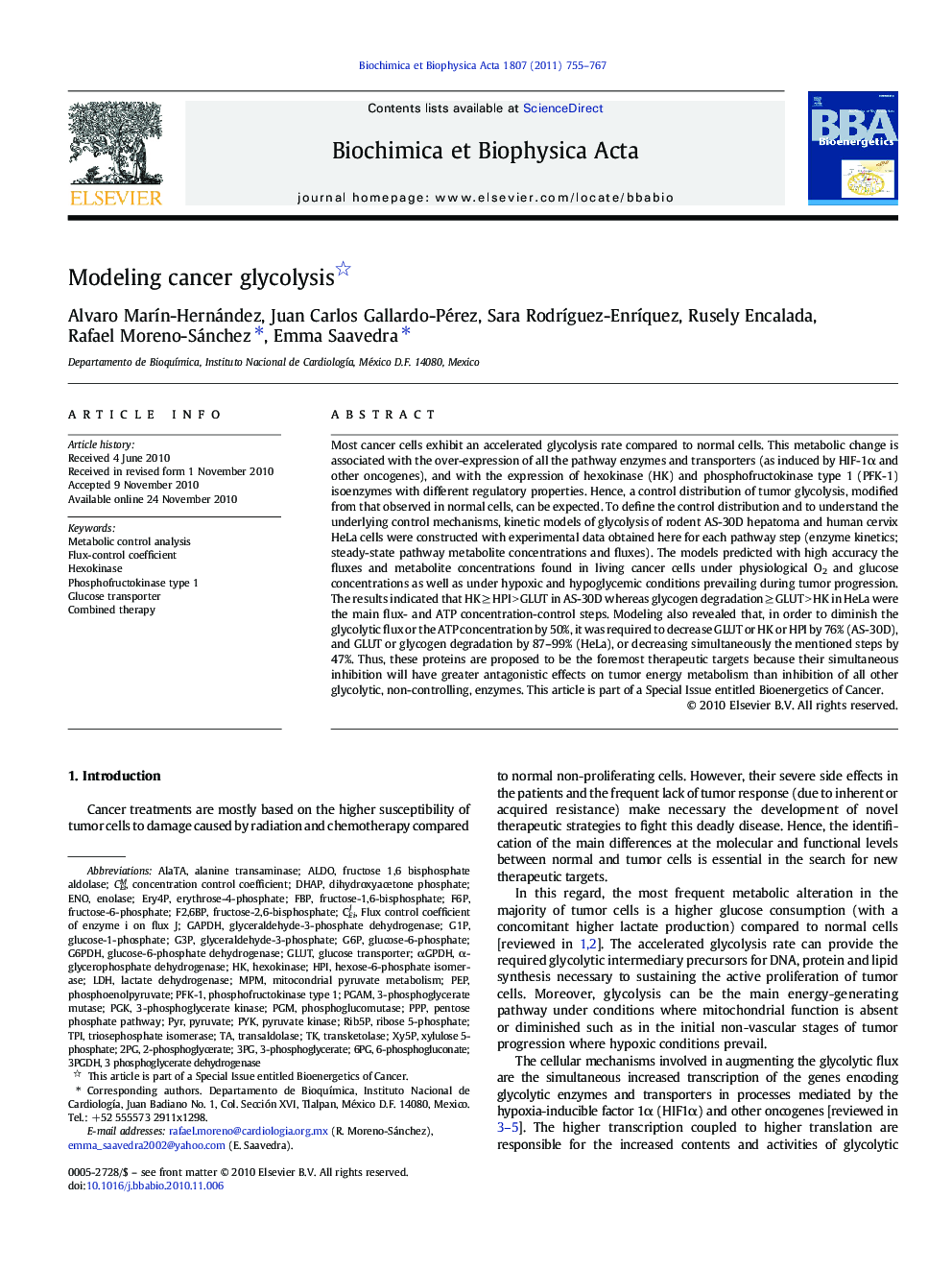| کد مقاله | کد نشریه | سال انتشار | مقاله انگلیسی | نسخه تمام متن |
|---|---|---|---|---|
| 1942718 | 1052624 | 2011 | 13 صفحه PDF | دانلود رایگان |

Most cancer cells exhibit an accelerated glycolysis rate compared to normal cells. This metabolic change is associated with the over-expression of all the pathway enzymes and transporters (as induced by HIF-1α and other oncogenes), and with the expression of hexokinase (HK) and phosphofructokinase type 1 (PFK-1) isoenzymes with different regulatory properties. Hence, a control distribution of tumor glycolysis, modified from that observed in normal cells, can be expected. To define the control distribution and to understand the underlying control mechanisms, kinetic models of glycolysis of rodent AS-30D hepatoma and human cervix HeLa cells were constructed with experimental data obtained here for each pathway step (enzyme kinetics; steady-state pathway metabolite concentrations and fluxes). The models predicted with high accuracy the fluxes and metabolite concentrations found in living cancer cells under physiological O2 and glucose concentrations as well as under hypoxic and hypoglycemic conditions prevailing during tumor progression. The results indicated that HK ≥ HPI > GLUT in AS-30D whereas glycogen degradation ≥ GLUT > HK in HeLa were the main flux- and ATP concentration-control steps. Modeling also revealed that, in order to diminish the glycolytic flux or the ATP concentration by 50%, it was required to decrease GLUT or HK or HPI by 76% (AS-30D), and GLUT or glycogen degradation by 87–99% (HeLa), or decreasing simultaneously the mentioned steps by 47%. Thus, these proteins are proposed to be the foremost therapeutic targets because their simultaneous inhibition will have greater antagonistic effects on tumor energy metabolism than inhibition of all other glycolytic, non-controlling, enzymes. This article is part of a Special Issue entitled Bioenergetics of Cancer.
Research Highlights
► The glycolytic pathway of both AS-30D hepatoma and cervix HeLa cells was modeled.
► In vitro enzyme kinetics and in vivo metabolite concentrations and fluxes were used for modeling.
► The models accurately predicted the in vivo pathway behavior under different O2 and glucose physiological concentrations.
► HK > HPI > GLUT in AS-30D hepatoma and glycogen degradation > GLUT > HK in HeLa carcinoma controlled glycolysis.
► To decrease glycolytic flux or ATP by 50%, the three controlling steps have to be simultaneously diminished by 47%.
Journal: Biochimica et Biophysica Acta (BBA) - Bioenergetics - Volume 1807, Issue 6, June 2011, Pages 755–767